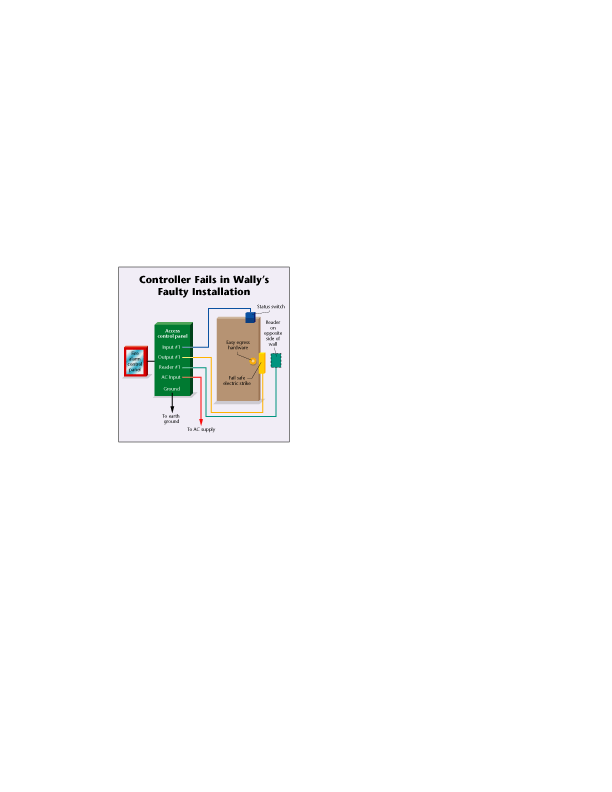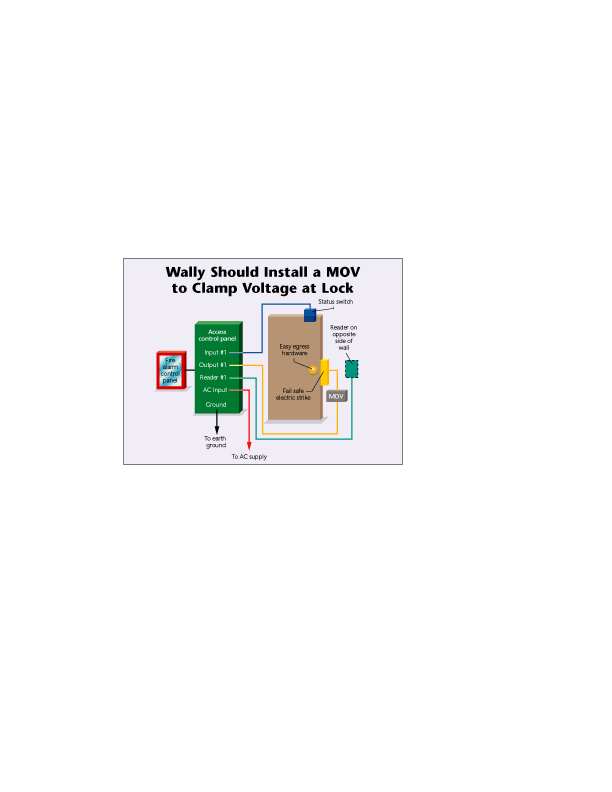a. contact card.
b. contactless card.
c. bar code.
d. weigand.
e. None of the above
2. A smart card that only requires that it be in close proximity to a reader is referred to as a
a. contact card.
b. contactless card.
c. bar code.
d. weigand.
e. None of the above
3. All smart cards contain a microprocessor.
a. True
b. False
4. A smart card that contains 2 chips each with its own interface is called a
a. combi card.
b. hybrid card.
c. proximity card.
d. Any of the above
e. None of the above
5. Many small dish television satellite receivers use smart cards.
a. True
b. False
6. Smart cards are capable of being used in
a. access control systems.
b. healthcare.
c. e-commerce/banking.
d. Any of the above
7. Which of the following is an example of a memory- type smart card?
a. Straight memory
b. Protected memory
c. Stored value
d. Any of the above
8. Identification based upon a physical characteristic of an individual is called biometric.
a. True
b. False
9. Flash memory devices will lose all stored data upon removal of power.
a. True
b. False
10. Iris scanners read the patterns of blood vessels on the back of the eye.
a. True
b. False
11. Which of the following is an example of a fingerprint reader technology?
a. Optical
b. Silicon
c. Ultrasonic
d. Any of the above
e. None of the above
12. A facial recognition technology that compares distances between features such as eyes, end of mouth, or end of nose is called
a. Eigenface.
b. feature analysis.
c. automated face processing.
d. neural network.
13. Finger scan systems store a copy of the user’s entire fingerprint in their database.
a. True
b. False
14. Which of the following is an example of fingerprint minutiae?
a. Dots
b. Islands
c. Ponds
d. Any of the above
e. None of the above
Hi-Tech ID
Biometric systems can replace a card and PIN by “measuring†some physical characteristic of the user that cannot be duplicated by an intruder. Smart cards store much more data than traditional credentials, allowing a single card to perform many tasks.
To see if you have kept pace with the advances in identification technology take the following quiz.

What’s Wrong with This?
Wally ‘Larman installed an access control system that included a proximity reader, fail-safe electric strike, and status switch. He selected the correct devices, used the correct wire, and interfaced the access control with the fire alarm system as shown in this diagram. His customer and inspectors were satisfied with the operation but a week later the system was not functioning. Wally found that the controller had burned out. He replaced the controller and tested all cables and devices, but he could not determine why the controller had failed. Can you see what caused the controller to fail?Answers
1. a2. b – Smart cards can require direct contact with a reader (contact type) or utilize RF to exchange data with the reader (contactless type).
3. b – Not all smart cards contain microprocessors; some only contain a memory chip with non-programmable logic.
4. b – Hybrid cards contain two chips each with their own interface. Combi cards contain a single chip with both contact and contactless interfaces.
5. a
6. d
7. d
8. a – Some examples of biometric technologies are fingerprint, hand geometry, retina scan, iris scan, voice recognition, and finger scan.
9. b
10. b – Iris scanners examine the physical characteristics of the iris. Retina scanners read the patterns of blood vessels on the back of the eye.
11. d
12. c
13. b – Finger scan systems store only particular data about the fingerprint in a small template. The original fingerprint cannot be reconstructed from this template.
14. d

Answer to: What’s Wrong with This?
Wally’s problem is caused by back EMF (Electromotive force) caused by the electric strike. When the coil of an electric lock collapses, the magnetic field induces a high voltage which can affect the operation of the access control system.Wally should install a metal oxide varister (MOV) at the lock to clamp this voltage. MOVs are devices that are installed in parallel with the lock and have a high internal resistance at normal voltage, but drop this resistance at high voltages. Keep in mind that when an MOV fails it often does so in a shorted condition, and since it is wired in parallel with the lock it can short the lock power. For this reason it is important that you install a fuse of the proper rating, in series with each lock output.
